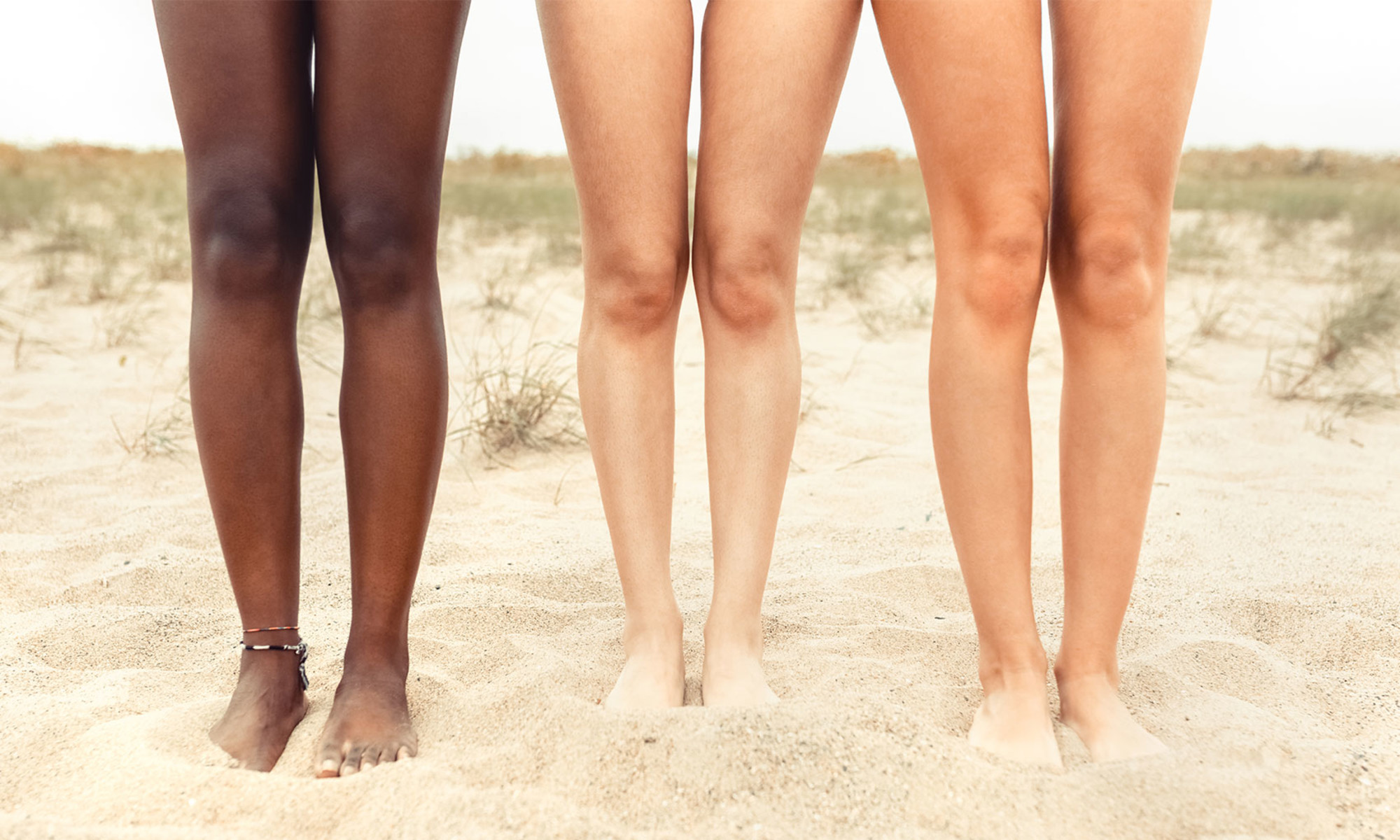An Expert's 3-Step Guide To Treating Orange Peel Skin On The Legs
It’s that time of the year when I start to think more and more about my legs. Here's how I deal with orange peel skin.


mbg Beauty Director
mbg Beauty Director
Alexandra Engler is the beauty director at mindbodygreen and host of the beauty podcast Clean Beauty School. Previously, she's held beauty roles at Harper's Bazaar, Marie Claire, SELF, and Cosmopolitan; her byline has appeared in Esquire, Sports Illustrated, and Allure.com.
Image by Marco Govel / Stocksy May 23, 2023 It’s that time of the year when I start to think more and more about my legs. The layers come off, the skin comes out, and all of a sudden adopting a more thorough body care routine starts to sound like a great idea. I’ll be honest with you: I’ve always been a bit self conscious about the skin on my legs. I’ve written before about how I deal with strawberry skin (or skin that looks congested post shave), as well as just generally having dry skin on my body. And like a lot of folks, I also deal with dimpling and bumpiness on my thighs (this is sometimes called “orange peel skin”—the beauty industry really loves comparing skin to fruit, I guess?). Essentially my skin just isn’t as smooth and svelte as I’d like it to be naturally. 
Advertisement
This ad is displayed using third party content and we do not control its accessibility features.
The good news is that I’ve hit a point in life where things like this really don’t bother me. Skin is skin is skin—and rarely does it look as flawless as it might in photoshopped advertisements. But perfectionism isn’t a goal of mine, and I’d rather just have my skin look healthy. But just because I don’t care that it’s not “perfect” doesn’t mean I give up caring for my skin entirely. Quite the opposite! I indulge in a body care routine that I love, and do so knowing that it won’t make dimples magically disappear or appear more “toned” overnight. And guess what? My skin has never looked or felt better. Keep skin hydrated
I can not overstate the importance of daily hydration for skin health. Dry, dehydrate skin appears dull, crepey, and is more prone to sagging—all of which will exacerbate the appearance of dimples and bumps. Not to mention, moisturizers can temporarily help skin look more supple and glowy. And in the long-term, a high-quality hydrator will help your skin look younger for longer. Don’t skip on hydration!
Look for options with barrier supporting ingredients and actives. Coenzyme Q10, for example, is a powerful antioxidant that protects skin cells from damage. Shea butter and oat oil have both been shown to help boost ceramides in the skin and bolster the barrier. mindbodygreen’s postbiotic body lotion uses these ingredients, plus a special biotech postbiotic ingredient that improves epidermal framework reconstruction, so skin is stronger and looks smoother with use.
Advertisement
This ad is displayed using third party content and we do not control its accessibility features.
Look for toning treatments
If your concerns are dimples on the skin, you might benefit from looking for a toning body cream or one formulated to treat crepey skin (as there’ll be ingredient overlap). Toning creams may have active ingredients to help tighten the skin and strengthen the epidermis.
For example caffeine is a popular ingredient in toning creams, as it can give the skin a boost of circulation and suppleness. Retinols help improve skin cell turnover, boost collagen production, and even thicken the epidermis of the skin, which can help improve the look of skin overtime (however, they can be challenging to tolerate—even on the body). AHAs, like glycolic acid, have also become popular in body treatments as they can slough off dry skin and even help support your body’s collagen production.
It’s important to make sure you use these treatments alongside body moisturizers and lotions though—if you’re not careful, using potent actives can end up disrupting the skin barrier and damaging the skin.
Faux tan
I personally don’t faux tan, but lots of pros swear by it to smooth out the appearance of skin. (There’s a reason most celebrities get fake tans—even if they don’t admit it.) Beauty editor Jamie Shcnieder once wrote about how it’s typically seen as a “high-maintenance” beauty ritual, but in reality: It makes your day-to-day so much simpler because your skin looks glowy and polished without much fuss.
“Especially as the weather warms up, I'll self-tan every 10 days or so for a faux glow. In addition to making me look like I just returned from a beach vacation, I find it helps balance and brighten my complexion, sort of like a full-body color corrector,” she writes. “That doesn't mean I'll skimp on my daily lotion, but self-tanner makes my skin appear much smoother, tighter, and more even-toned.”
Check out mbg’s favorite self-tanners and how to use them here.
Advertisement
This ad is displayed using third party content and we do not control its accessibility features.
The takeaway
Getting smooth, supple, hydrated skin head-to-toe doesn't need a full routine overhaul. Just look for smart hydrators with barrier supporting actives and regularly exfoliate. And if those don't work? Well you can always fake it with a faux tan. For more tips on how to treat crepey skin on the legs, check out our guide.

 JaneWalter
JaneWalter -v1646695196476.jpg?1148x800)








![Trading Journal: 5 Most Efficient Ones Analyzed [2021]](https://www.dumblittleman.com/wp-content/uploads/2021/10/Best-Investment-Newsletter-8.png)
























